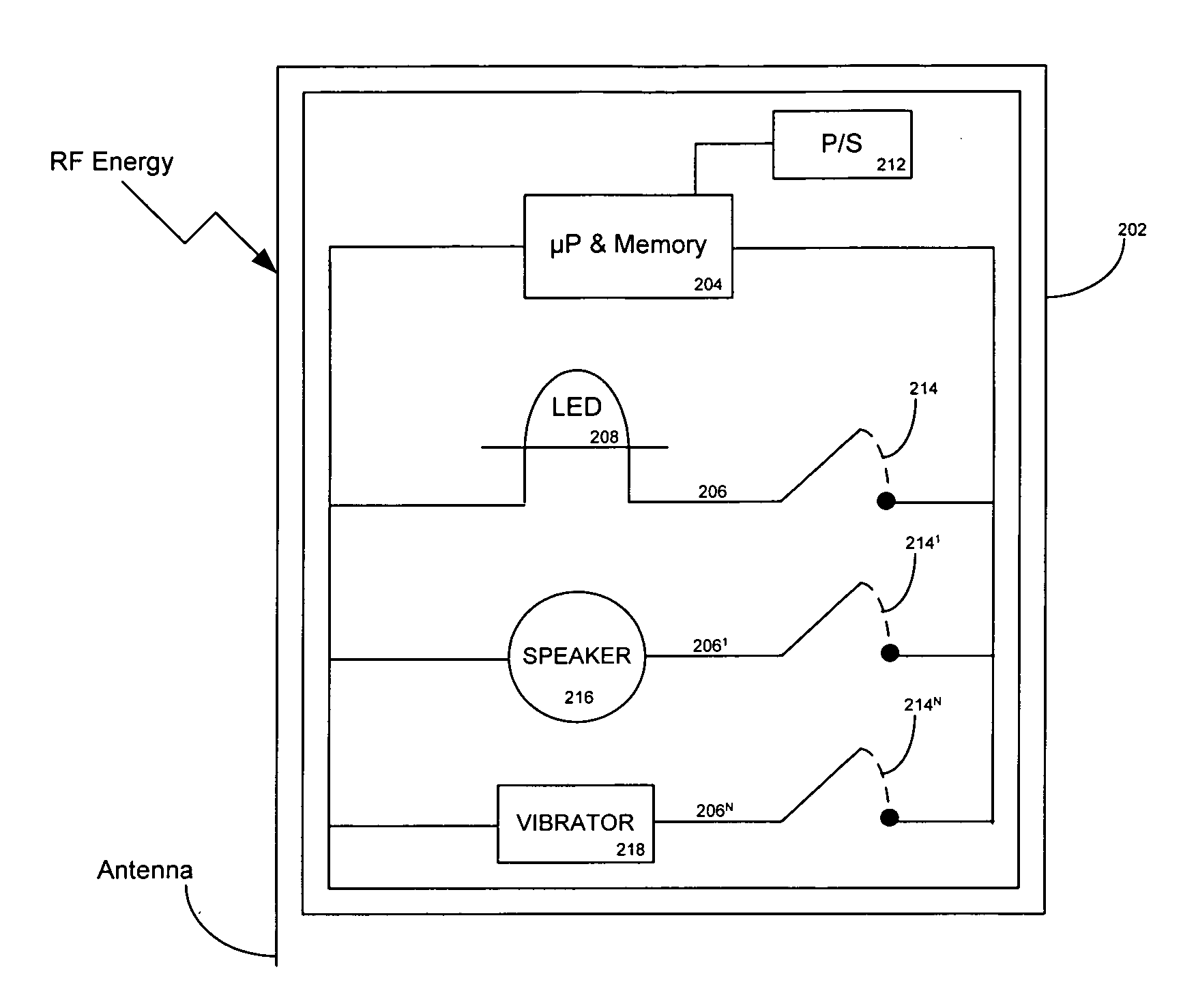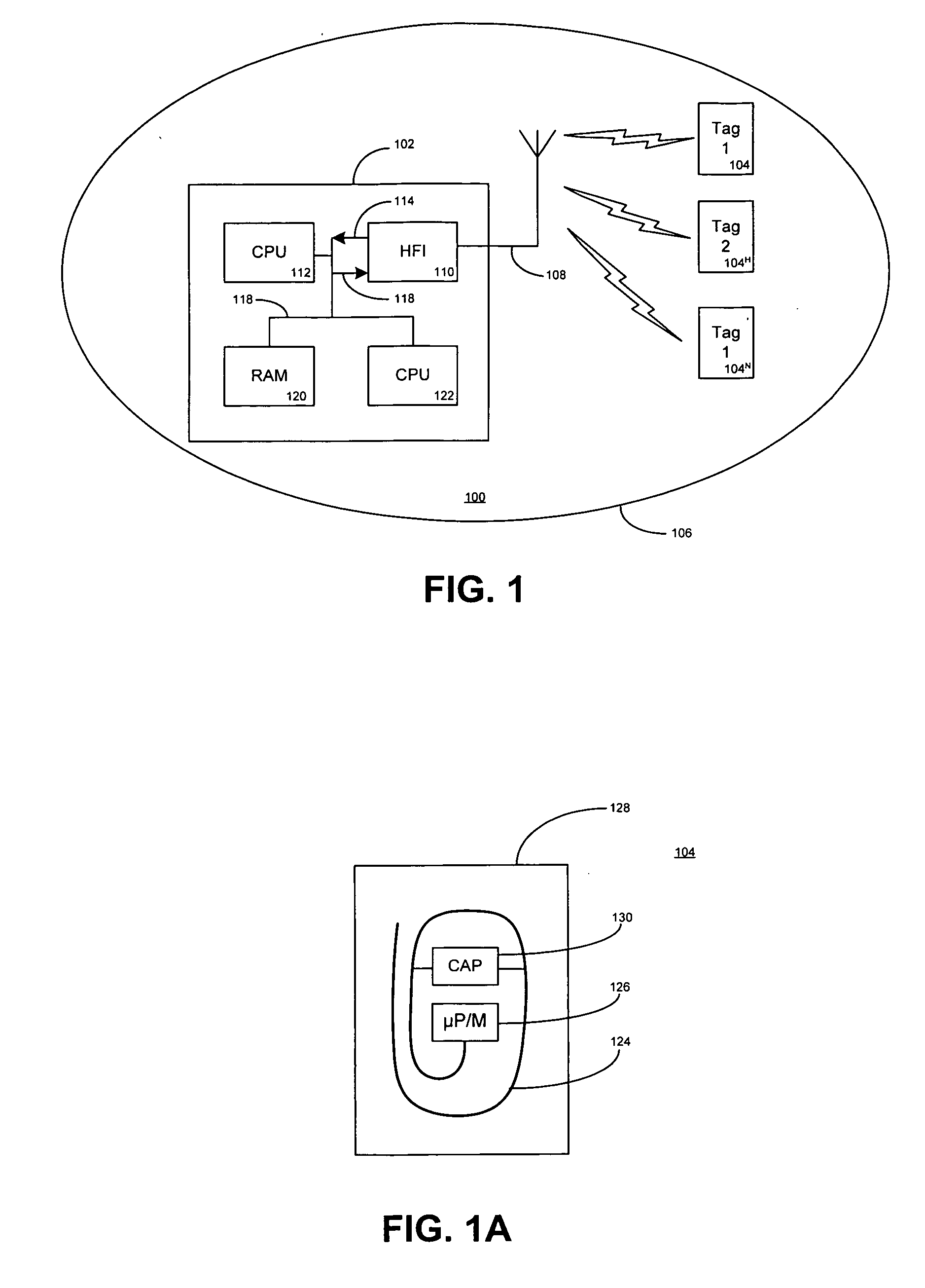Indicating radio frequency identification (RF-ID) tag
- Summary
- Abstract
- Description
- Claims
- Application Information
AI Technical Summary
Benefits of technology
Problems solved by technology
Method used
Image
Examples
Embodiment Construction
[0034] In FIG. 1, a RF-ID system 100 includes a reader 102 for contacting one or more tags 1041, 1042 . . . 104N installed in products, goods, etc., and within a reader transmission zone 106. The reader contacts the tags, via inductive coupling using radio frequency (RF) transmission. Typically, the tags do not contain a power supply and draw their energy from the electromagnetic energy in the RF transmissions. The operating frequency of the RF-ID system is the transmission frequency of the reader, typically 13.56 MHz. In response to a reader interrogation, the transmission frequency of the tag is usually the same as the reader, but at a much less power level. The tag transmission for sending data to the reader can occur by several transmission processes including backscatter or reflection or load modulation where the reader field is influenced by the tag. Further details on the interaction of the reader and a tag are described in the text “RFID Handbook” by K. Finkenzeller, John Wi...
PUM
 Login to View More
Login to View More Abstract
Description
Claims
Application Information
 Login to View More
Login to View More - R&D
- Intellectual Property
- Life Sciences
- Materials
- Tech Scout
- Unparalleled Data Quality
- Higher Quality Content
- 60% Fewer Hallucinations
Browse by: Latest US Patents, China's latest patents, Technical Efficacy Thesaurus, Application Domain, Technology Topic, Popular Technical Reports.
© 2025 PatSnap. All rights reserved.Legal|Privacy policy|Modern Slavery Act Transparency Statement|Sitemap|About US| Contact US: help@patsnap.com



